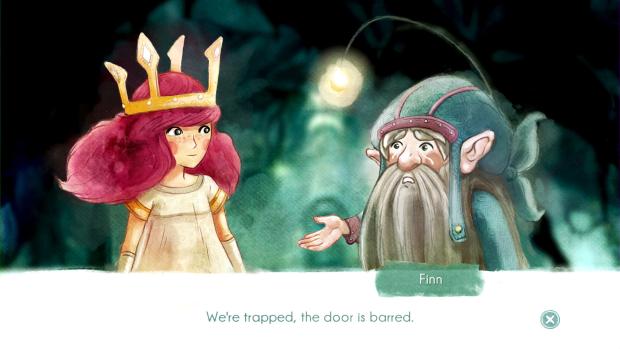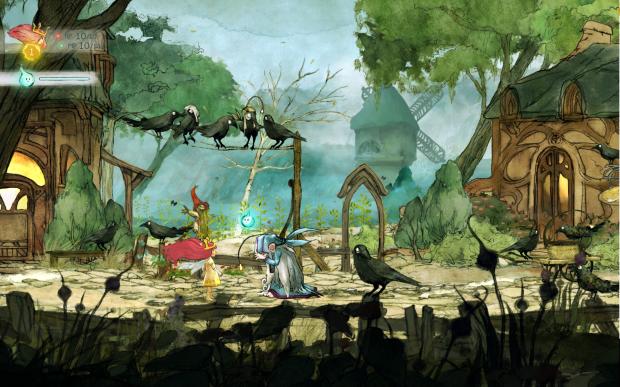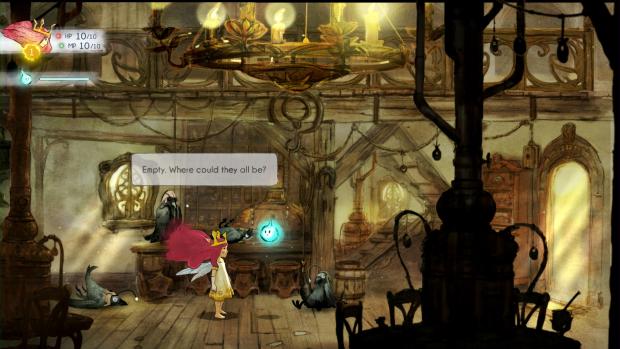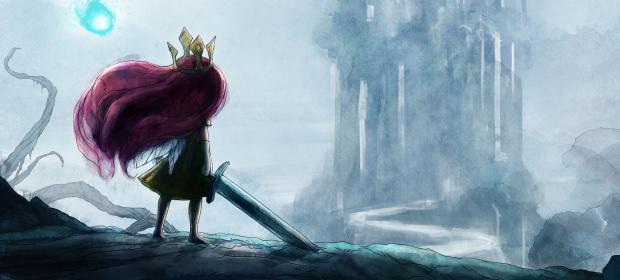At GDC Europe, Far Cry 3’s creative director Patrick Plourde let slip that he and his Far Cry partner and lead writer Jeffrey Yohalem were working on a brand new IP called Child of Light. Inspired by J-RPGs and built using the UbiArt framework, the game looks incredibly promising. At Ubisoft’s Digital Day, we not only got some hands-on time with the game, but also had a chat with writer Yohalem.
The game has been described as an interactive poem, a homage to Japanese RPGs and more, how would you describe it?
From the beginning we wanted to create a playable poem, so I think that is the best descriptor. I think it is a modern Fairytale – but that’s about it, I think that more words would complicate it.
What fairytales influenced Child of Light, and which traditional JRPGs/ did it take cues from?
I grew up on a lot of wonderful stories like His Dark Materials, the Chronicles of Narnia, stories by E. Nesbit. These wonderful stores that I would devour – I wanted to write something like that. It also harks back to The Longest Journey and Syberia. In this case it is about the daughter of a Duke, Aurora, in 1895 Austria who wakes up one day to find herself in this magical lost continent. She is struggling and finds that things are not what they seem, and she is going to have to do much more than defeat an Evil Queen to escape from there.

Was it difficult to tie together all of the elements in a game that is such a mix of different elements, being a side-scroller, poem, RPG and puzzle game?
No it wasn’t, because Pat the creative director and I both very firmly believed that the story should be the centre of everything. So we had the turn-based J-RPG gameplay and the combat and levelling system that helped the story tell the struggle to grow up, and so Aurora and the player are going through the same process and all of the elements; exploration, puzzle solving combat and levelling are about that journey away from safety and evolving into an adult.
From a design standpoint, the game has a very distinct aesthetic, who were the influences behind the art style?
Yoshitaka Amano, who drew a lot of the early Final Fantasy artwork, as well as Arthur Rackham and a lot of turn of the century fairytale artists – all of these great, imaginative artists who had a very clear style. There is a kind of magic in museums, you can step into a painting and there is a whole new world there – we wanted to capture that in the game.

It has been said before that the game belies these fairytale and storybook influences by developing into quite a dark story, is is definitely not a children’s game. Was this an intentional move, to almost lull players into a false sense of security?
From the very beginning, although the whole things rhymes, like in the Rhyme of the Ancient Mariner – where the sailor goes out and is cursed by the Albatross – it is told in that sort of rhyme like a ballad. Which is perfect for epics, a kind of journey across time and space that is full of tragedy and joy. So it is that kind of a story, and from the very beginning you will know that – it doesn’t pull the rug out from under you. At the same time, we really wanted to create a joyful experience – plus, life is joy even through all of the pain.
How was it for you as a creator to go from working on a massive FPS like Far Cry, to working on a relatively emotional and personal game like Child of Light?
I treated Far Cry as a very emotional tale – if you dig into Far Cry you will see all of this stuff under the surface, it was intended to be a vulnerable work. They both explore the fact of at terrible, turbulent explosive time when you change from being a child to an adult.
Going through events who change who you are? Is telling that kind of story quite important to you?
Yes, because I think – especially for my generation who are in a strange in-between space, where technology and social media keep us connected to our family so that we never leave the nest – at the same time, there is the fear that as parents get older it is kind of like a river heading for a waterfall. If you stay focused on your family you will lose them, and then what are you going to do? If you don’t have the skills to fly on your own then you are in trouble. I think that dealing with that moment in someone’s life never gets less powerful because we are all different and that moment can manifest itself in a lot of different ways, even if it doesn’t seem that way from the outside. As we get older, I think the best stories help give us strength to help each other through a shared experience.
What advantages did using the UbiArt framework for the game present? How did it help you realise your vision?
UbiArt is an incredibly powerful tool, because we can take the artists vision and put it straight into the game. There is no distillation, it is pure.

The game is very art-driven, almost like a painting come to life…
Exactly, and it needed to feel like that way. The engine allows us to grow the game organically, it is the same with the music, the poetry, we are trying to put as much of the human – the artist – as possible into the game.
Finally, there is a very pressing question that we like to ask all of our interviewees – do you keep your Tomato Ketchup in the fridge or in the cupboard?
In my fridge – once the white seal has been broken. Actually, I must say, the first time I use it, I am always a little disappointed that it isn’t cold.
A controversial answer there to wrap up the interview.






